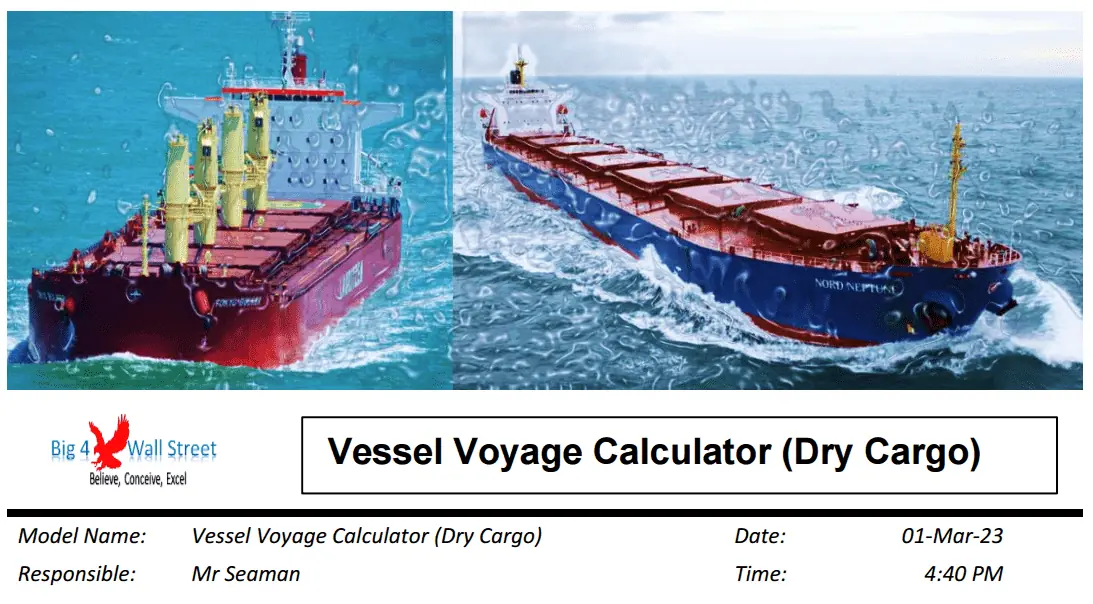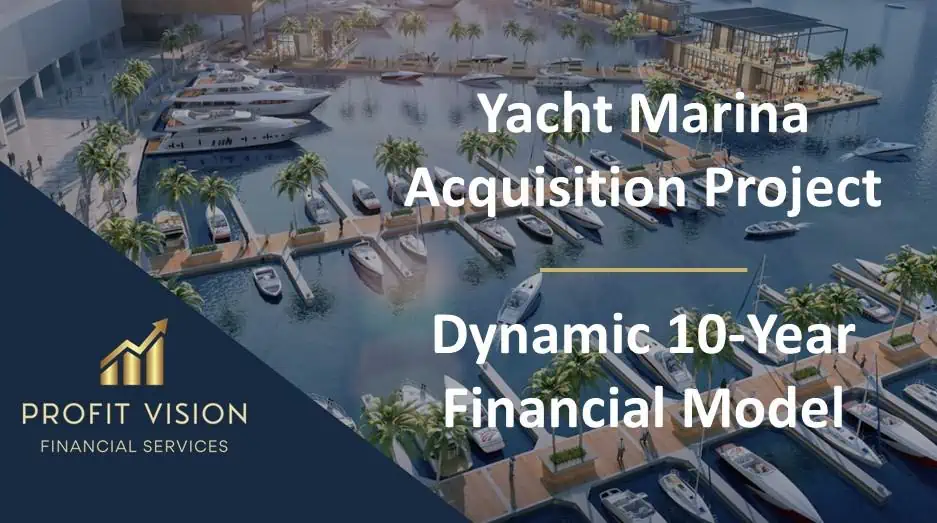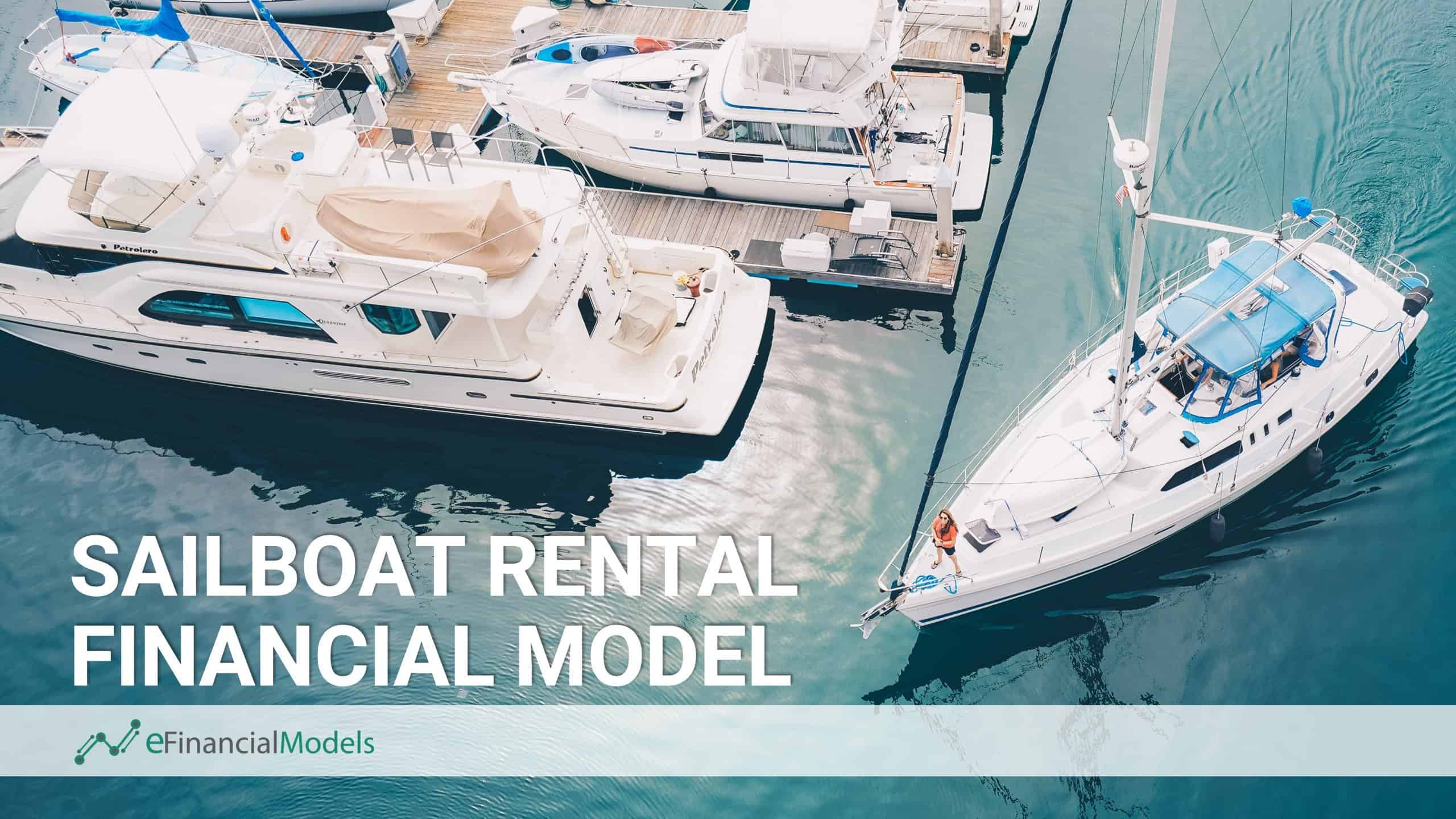Tanker Acquisition & Operations – DCF 30Y Financial Model
The “Tanker Acquisition & Operations – DCF 30Y Financial Model” is a comprehensive financial model designed to evaluate the financial feasibility and profitability of acquiring and operating a tanker over a 30-year period. This sophisticated model utilizes the Discounted Cash Flow (DCF) methodology, a widely accepted financial valuation technique, to assess the investment potential and forecast the future financial performance of the tanker fleet.

The “Tanker Acquisition & Operations – DCF 30Y Financial Model” is a comprehensive financial model designed to evaluate the financial feasibility and profitability of acquiring and operating a tanker over a 30-year period. This sophisticated model utilizes the Discounted Cash Flow (DCF) methodology, a widely accepted financial valuation technique, to assess the investment potential and forecast the future financial performance of the tanker fleet.
The financial model provides a detailed analysis of various factors influencing the acquisition and operations of tankers, allowing stakeholders to make informed decisions. It considers key parameters such as vessel acquisition costs, financing options, operating expenses, TCE, vessel maintenance, and depreciation, among others.
The model’s primary purpose is to project the financial statements generated by the tanker over a 30-year horizon (depending on the assumptions set) and calculate the Net Present Value (NPV) and Internal Rate of Return (IRR) of the investment. By incorporating a long-term perspective, the model captures the potential risks and rewards associated with tanker acquisition and operations in the maritime industry, aiding in strategic planning and investment evaluation.
Key features of the “Tanker Acquisition & Operations – DCF 30Y Financial Model” include:
– Financial Statements: such as Profit and Loss, Balance Sheet, and Cash Flows. The model generates projections, considering income from vessel operations, TCE, operating expenses, financing costs, and other relevant factors. It provides a clear picture of the expected cash inflows and outflows over the investment period.
– Capital Structure and Financing: The model incorporates the ability to customize the capital structure by considering various financing options, including debt and equity financing. It calculates the debt repayment schedules and the resulting impact on the financial metrics.
– Financial Metrics: The model provides essential financial metrics, such as NPV, IRR, and payback period, enabling users to evaluate the attractiveness and profitability of the tanker acquisition and operations project.
– Graphical Representations: The financial model presents the results in user-friendly graphical formats, including charts and graphs, to enhance the understanding of the projected financial performance and highlight key insights.
The “Tanker Acquisition & Operations – DCF 30Y Financial Model” serves as a comprehensive tool for investors, financial analysts, and industry professionals involved in evaluating the financial viability and potential risks associated with tanker fleet acquisitions and operations. Its robustness and flexibility make it an invaluable resource for making informed investment decisions in the maritime transportation sector.
So, for a quick overview of the model, in the contents tab, you can see the structure of the model and by clicking on any of the headlines to be redirected to the relevant worksheet.
On the manual tab, you are able to feed the general information for the model, such as: project title, responsible, the timeline of the model, and the date and currency conventions.
Additionally, there is a description of the color coding of the model in the same tab. Inputs are always depicted with a yellow fill and blue letters, call-ups (that is direct links from other cells) are filled in light blue with blue letters, while calculations are depicted with white fill and black characters.
There is also color coding for the various tabs of the model. Yellow tabs are mostly assumptions tabs, grey tabs are calculation tabs, blue tabs are outputs tabs (that is effectively results or graphs), and finally, light blue tabs are admin tabs (for example: the cover page, contents, and checks).
Guide Tab: This tab helps you to gain a grasp of the main value drivers of the model and understand the critical issues of the business.
TCE tab: Here, you can set the assumptions for a specific voyage you have in mind and calculate the corresponding TCE of the voyage. Then you can select to use the calculated TCE, or you can input your own TCE rate in the yellow cell. Make sure to select the rate to be used.
Moving on to the Inputs (in yellow whatever can be amended as an assumption): detailed inputs for revenues (vessel characteristics, TCE rates, availability days, and brokerage commission), costs (crew, stores, repairs, maintenance, insurance, and administrative), working capital (receivables, payables, and inventory), fixed assets and capex (vessel purchase, dry docks, special surveys), equity financing as well as valuation assumptions (such as discount rates used in the weighted average cost of capital tab or WACC).
In the summary tab you can see a high-level report with the main metrics and value drivers of the model. It can be readily printed on one page for your convenience.
Calculations: this is where all calculations are performed. The revenues from each vessel are calculated based on the available days and whether there is a need for dry docking and deducting the operating costs adjusted for inflation, the operating profit resulting. Based on the assets financed and the gearing of the financing, interest, and depreciation are occurring. By using the working capital assumptions, the impact of the business cycle is presented. Finally, depending on the level of the investment considered, the relevant debt financing is calculated (Long term debt and overdraft).
In the Outputs tab: everything is aggregated here into the relevant statements: profit and loss, balance sheet, and cash flow.
Moving to the Investment Metrics tab, a valuation is performed by using the free cash flows to the firm, and then a series of investment metrics are presented (Net Present Value, Internal Rate of Return, Payback Period, Cash on Cash multiple). Additionally, the Debt Service Coverage Ratio and the Loan Life Coverage Ratio are presented.
In the Graphs tab: Various graphs present the investment and operating costs, the revenues per vessel type, and the banking ratios (DSCR and LLCR). Then multiple charts present the performance of the project from revenues to bottom line along with debt, assets, working capital, and cash flows, which results in a valuation on a project basis as well as on an equity basis together with the internal rate of return of the project and payback period metrics.
Checks: A dedicated worksheet that makes sure that everything is working as it should!
Important Notice: Yellow indicates inputs and assumptions that the user can change, blue cells are used for called-up cells, and white cells with black characters indicate calculation cells.
Similar Products
Other customers were also interested in...
Shipping Vessel Financial Model
Shipping Vessel’s Financial Model presents the business case of the purchase of two vessels with t... Read more
Vessel Voyage Calculator (Dry Cargo)
This financial model allows the user to calculate and compare 3 different vessel voyage estimations ... Read more
Yacht Marina Acquisition Financial Model
Financial model presenting an investment scenario of a Yacht Marina, from the acquisition of the pro... Read more
Cruise Line Company – Dynamic 10 Year Financial ...
The essential productive activity of the tourism industry, particularly as the consumption of experi... Read more
Port Terminal Operator – Project Finance Mod...
Financial Model presenting a business scenario of a Port Operator with an existing terminal for Bulk... Read more
Shipping Vessels Portfolio Financial Model
Ships, boats, and other recreational vessels are owned by a large number of individuals who often pu... Read more
Ship-to-Ship Fuel Bunkering 5-Year 3 Statement Fin...
5-year rolling 3 statement financial projection with a monthly timeline for a startup or existing fu... Read more
Ship Management Business 5-Year 3 Statement Financ...
5 year rolling financial projection Excel model for a startup or existing ship management business h... Read more
Sailboat Rental Business Financial Model
This comprehensive 10-year monthly Excel template offers an ideal basis for developing a business pl... Read more
Logistics Company Finance Model
A comprehensive editable, MS Excel spreadsheet for tracking logistic company finances, including yea... Read more
You must log in to submit a review.
























